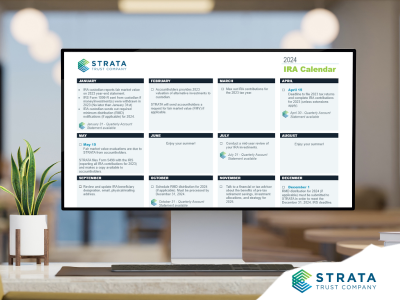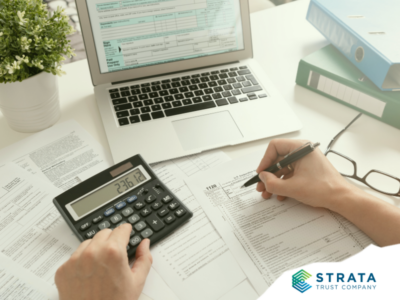Whether you have some money to invest now or you simply understand that you need to invest more in the future, being unsure of what vehicle to use for the most tax advantages can be a bit confusing. Does it make sense to place your assets into a tax-advantaged savings vehicle, such as an Individual Retirement Account (IRA), or would you be better off investing directly with cash within a taxable, retail-type account that is not considered tax-qualified? Many variables may affect your decision, so you should seek sound advice from a qualified financial professional before you invest so they can advise on what path would be both tax-advantaged and best for your specific situation. Below are some talking points to help make an informed decision.
How Do Tax-Advantaged IRAs Work?
As you may already know, both Traditional and Roth IRAs possess several tax benefits. In short, Traditional IRAs may provide an up-front tax deduction, and earnings are tax-deferred until assets are distributed. Roth IRAs provide no tax deduction, but earnings are potentially tax-free if the distributions are considered “qualified.” Here is a partial list of Traditional and Roth IRA characteristics.
| Traditional IRA | Roth IRA |
| Potential tax deduction for contribution | No tax deduction for contribution |
| Tax-deferred growth | Potential tax-free growth |
| Early distribution penalty (until age 59½ or unless an exception applies) | Ordering rules allow most contributions to be withdrawn without tax or penalty |
| Required minimum distributions (RMDs) at age 73 (or earlier, in some cases) | No RMDs during IRA owner’s lifetime |
| Beneficiaries can be named | Beneficiaries can be named (and may receive tax-free distributions) |
| Possible protection from creditors | Possible protection from creditors |
Traditional and Roth IRAs can provide substantial long-term savings benefits that taxable accounts cannot. However, accounts that are not tax-qualified may still serve a purpose for you.
When looking at investments that can be held within your IRA, self-directed IRAs (SDIRAs) make your options almost unlimited. For example, when thinking of investing in a start-up company, a real estate deal, or being part of a capital raise to help a company scale—an SDIRA might be a better option than just investing cash. Not only do your earnings accrue on a tax-advantaged basis, but you also get the added benefit of compounding interest.
How Do Taxable Accounts Work?
For our discussion here, a taxable account refers to accounts that do not have an IRA’s tax advantages or investors that leverage cash to invest directly into assets, such as rental property. Because the investments are not held within a tax-advantaged retirement account, they are subjected to different tax rules. For example, any earnings are taxable in the year that the earnings are credited (earnings are treated as additional income). This alone can diminish the long-term benefits of a taxable account.
Consider someone who contributes $7,000 a year to an IRA, starting at age 30 and continuing until age 65. At a 7% annual rate of return, the account would be worth $1,035,394 at age 65, with total contributions equaling $245,000. In a taxable account, the earnings—totaling about $790,000—would be taxed each year as they accrue, meaning the saver would have to pay this additional tax obligation each year. With an IRA, the earnings are either deferred until withdrawn (Traditional IRA) or potentially never taxed at all (Roth IRA).

Which Accounts Are Best for You?
Deciding which kind of account(s) to establish is not necessarily an either/or choice; most savvy investors have a healthy mix. There may be sound reasons to have both types of accounts—and even to have both Roth and Traditional IRAs. For instance, you may choose a cash retail account for your “emergency fund.” Although earnings on many of these accounts are modest, you may like the liquidity that they offer, just in case you need the assets on short notice. But keep in mind that many savers use their Roth IRA for such purposes, as well. The Roth IRA ordering rules allow you to withdraw your annual contributions at any time without tax or penalty, meaning these Roth IRA assets could be used for emergencies (provided that they weren’t tied up in an investment that is hard to liquidate).
Additional Information
At STRATA, we want you to understand your options and choose what combination works for you. Before you invest, ensure that the vehicle used fits the situation to get the most out of your investment dollars. To help you calculate more specifically how IRAs compare with taxable accounts, STRATA offers a series of IRA calculators that you can use to experiment with whatever contribution scenarios you like:
Taxable vs. Tax Deferred vs. Tax-Free Investment
Traditional IRA vs. Taxable Savings
Roth IRA vs. Taxable Investments
You can find more IRA and retirement savings calculators on our Financial Calculators page.
Although this information provides just a brief overview of tax-advantaged accounts, it might help make you aware of some of the investment vehicles that are available to you. STRATA does not offer any investment advice; however, our self-directed IRA experts will gladly answer any questions you may have about SDIRAs and the investment options available—feel free to contact us. For further information about SDIRA options at STRATA, view our IRA Savings Comparison Chart.









